Question
What is the position of L with respect to
F? Study the following information carefully and answer the questions below: There are nine persons i.e. E, F, G, H, I, J, K, L and M are sitting in a triangular table such that three of them are sitting at the corner of the table and they are facing outside the table and two persons are sitting on each side of the table and they are facing inside the table. K and G are immediate neighbours of each other on the same side of the table. H sits third to the left of K. J sits two places away from H. E sits to the immediate right of J. Only one person sits between G and F who is not an immediate neighbour of K. L sits fourth to the right of I who is not an immediate neighbour of H.Solution
K and G are immediate neighbours of each other on the same side of the table. As per this statement, there are two possible cases and the arrangement will look like this: Case-1 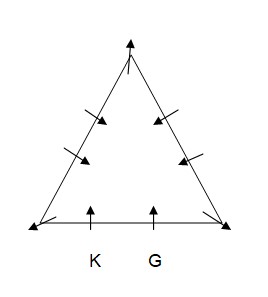 Case-2
Case-2 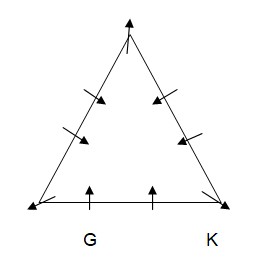 H sits third to the left of K. As per this statement, the arrangement will look like this: Case-1
H sits third to the left of K. As per this statement, the arrangement will look like this: Case-1 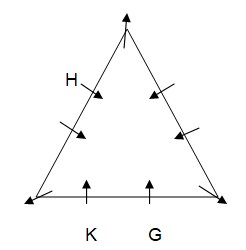 Case-2
Case-2 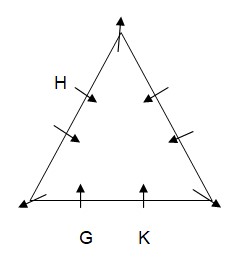 J sits two places away from H. As per this statement, CASE I will further get spilt into one more case and the arrangement will look like this: Case-1
J sits two places away from H. As per this statement, CASE I will further get spilt into one more case and the arrangement will look like this: Case-1 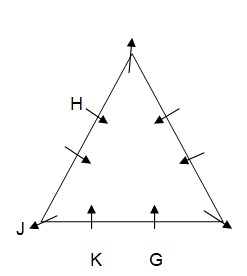 Case-1A
Case-1A 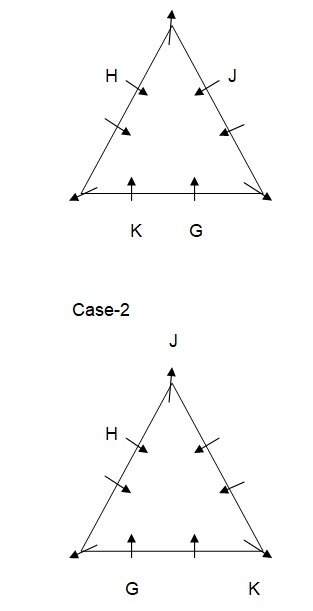 E sits to the immediate right of J. As per this statement, the arrangement will look like this:
E sits to the immediate right of J. As per this statement, the arrangement will look like this: 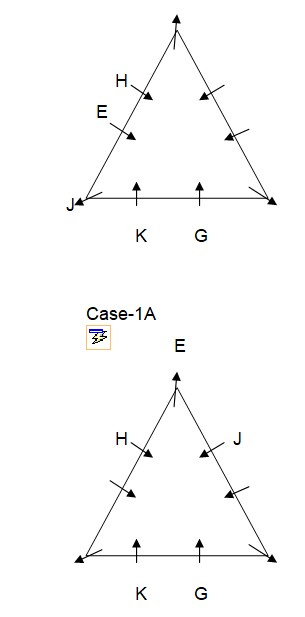 Case-2
Case-2 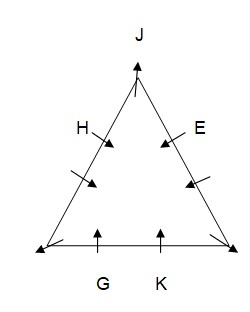 Only one person sits between G and F who is not an immediate neighbour of K. As per this statement, CASE II will get eliminated and we will continue with CASE I and CASE I (A) and the arrangement will look like this: Case-1
Only one person sits between G and F who is not an immediate neighbour of K. As per this statement, CASE II will get eliminated and we will continue with CASE I and CASE I (A) and the arrangement will look like this: Case-1 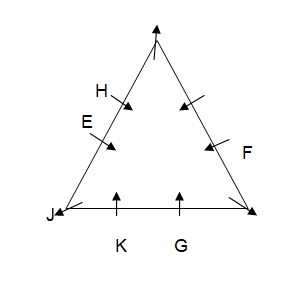 Case-1A
Case-1A 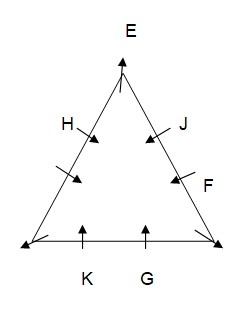 L sits fourth to the right of I who is not an immediate neighbor of H. As per this statement, CASE I will get eliminated and we will continue with CASE I (A) and the final arrangement will look like this: Case-1A
L sits fourth to the right of I who is not an immediate neighbor of H. As per this statement, CASE I will get eliminated and we will continue with CASE I (A) and the final arrangement will look like this: Case-1A 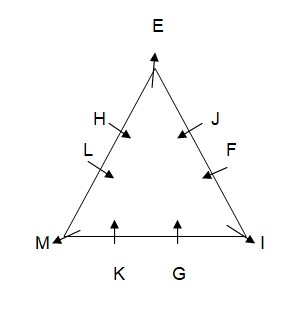
Statements:
Some Black are Red.
Some Red are White.
Only White is Green.
Conclusion:
I. All Black can be Green.<...
Statements:
All Telegram are Office.
Some Letter are Office.
Some Mail are Letter.
No Letter is Posts.
Conclusions:
In the question below some statements are given followed by three conclusions I, II, and III. You have to take the given statements to be true even if ...
In the question below some statements are given followed by three conclusions I, II, and III. You have to take the given statements to be true even if ...
Statements:
Some Mobile are Sim
All Mobile are Cable
No Cable is an Adapter
Only a few Cups are Adapter
Three statements are given followed by two conclusions numbered I and II. Assuming the statements to be true, even if they seem to be at variance with ...
In the question below there are three statements followed by three conclusions I, II and III. You have to take the four given statements to be true eve...
Statement
Only a few Pumpkins are Apples
All Apples are Oranges
No Orange is a Pear
Conclusion
I. Some Pears are not ...
Statement:
Only a few beautiful are smart.
All smart are handsome.
No handsome is ugly.
Conclusion:
I. Some beautiful...
Read the given statements and conclusions carefully. Assuming that the information given in the statements is true, even if it appears to be at varianc...
Relevant for Exams:


